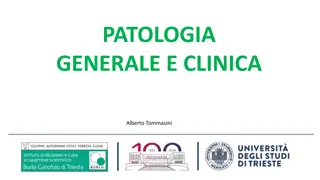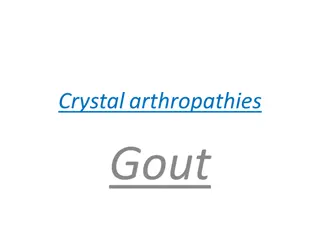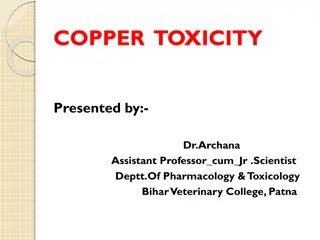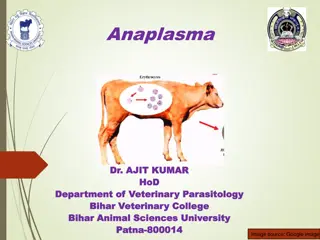Hematopoiesis: Processes and Niches in the Human Body
Hematopoiesis, the process of daily blood cell production, involves maintaining the physiological balance of circulating blood cells. It includes the generation of billions of erythrocytes, platelets, and leukocytes to meet the body's needs. The location of hematopoiesis changes throughout human lif
4 views • 69 slides
Understanding Blood Cells and Their Functions in the Circulatory System
Blood is comprised of cells and plasma that circulate within the closed circulatory system. The formed elements include erythrocytes, platelets, and leukocytes, each playing vital roles in oxygen transport, defense against infection, and nutrient distribution throughout the body. The hematocrit esti
1 views • 38 slides
Advantages of Carrier Erythrocytes in Drug Delivery
Erythrocytes, the main carriers of oxygen in the body, can be utilized as carriers for drug delivery due to their biocompatibility and ability to protect drugs from premature degradation. They offer advantages such as targeted drug delivery, sustained release of drugs, and protection against toxic e
1 views • 30 slides
Entamoeba histolytica: Protozoan Parasite in Digestive Tract
Entamoeba histolytica is a zoonotic protozoan parasite found in the digestive tracts of various hosts. It exists in trophozoite and cyst forms, with trophozoites containing erythrocytes and pseudopodia. The cyst stage is characterized by spherical masses discharged by trophozoites and containing chr
0 views • 17 slides
Understanding Crystalarthropathies and Gout: A Comprehensive Overview
Crystalarthropathies encompass a group of diseases characterized by hyperuricemia and uric acid crystal formation, leading to conditions like gouty arthritis and nephrolithiasis. Primary gout, characterized by hyperuricemia without an identifiable underlying cause, primarily affects older men. Mecha
0 views • 34 slides
Understanding Copper Toxicity in Veterinary Science
This presentation by Dr. Archana explores the terminology, sources, toxicokinetics, mechanisms of toxicity, clinical signs, and treatment options related to copper toxicity in animals. It discusses how copper absorption, retention, and elimination are affected by dietary factors, leading to copper a
0 views • 11 slides
Overview of Anaplasma Marginale: Disease, Transmission, and Life Cycle
Anaplasma marginale, a species of small round bodies found inside erythrocytes, is the causative agent of anaplasmosis in animals. This pathogen is primarily transmitted by various species of ticks, biting flies, and even mosquitoes. The disease can be mechanically spread through contaminated blood
0 views • 13 slides
Overview of Blood and Hematology: Functions and Composition
The human body consists mostly of water, with blood making up approximately 8% of body weight. Blood is composed of plasma and formed elements, including red blood cells (erythrocytes), white blood cells (leukocytes), and platelets. Plasma, the liquid part of blood, contains various proteins such as
0 views • 12 slides
Understanding Blood: Composition and Functions
Blood is a vital fluid tissue in the human body, classified as a connective tissue. It consists of living cells known as formed elements suspended in a non-living matrix called plasma. The physical characteristics of blood, such as color range, pH level, and temperature, play crucial roles in mainta
0 views • 33 slides








